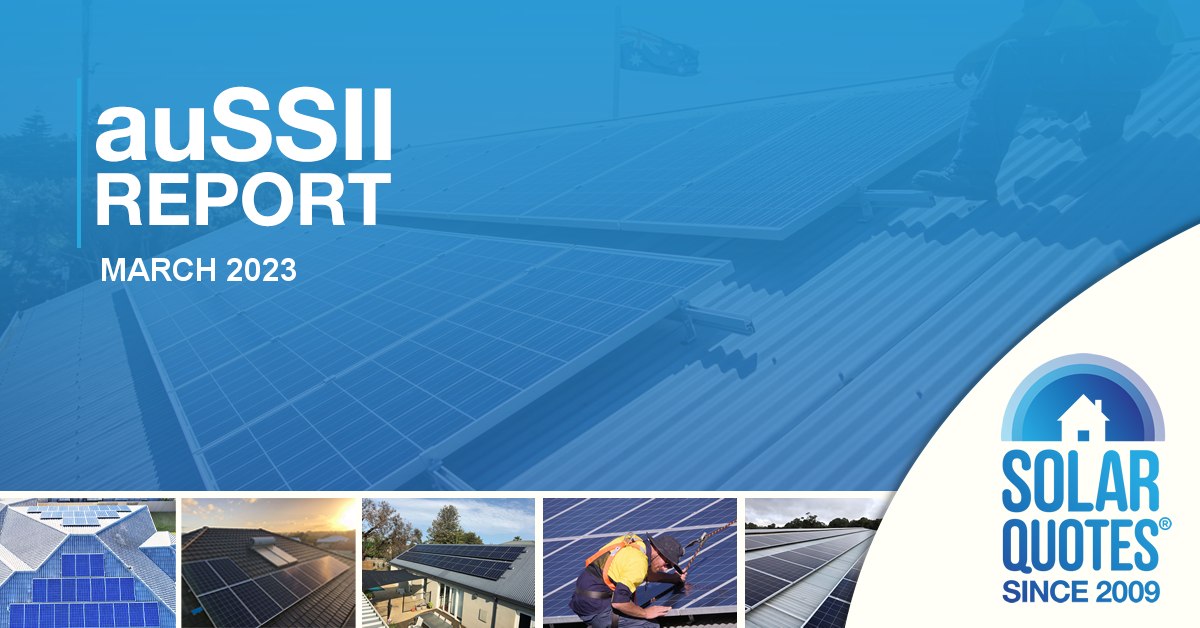
What size solar systems were Australians buyers wanting in February? And what proportion wanted a home battery as well? Find out in the latest SolarQuotes auSSII report.
Solar System Capacity
When presented with capacity options of 3-5 kW, 5-10 kW, 10-15 kW, 15-20 kW, 20+ kW and “Fill Roof” on SQ’s quoting form, and a selection was made; 5 – 10kW accounted for 75% of choices in February 2023 (74% in January).
A little more than 9% were interested in the larger capacity selections. Additionally, close to 13% selected the “Fill Roof” option – whatever that capacity may turn out to be.
How much solar capacity should households install? Assuming the roof is suitable and budget allows; fill the rooftop up! Find out more about solar system sizing.
Purchasing Timeframe Intention
An intention to buy a solar power system immediately eased again in February – a little under 22% compared to just under 23% in January and 27% in December and November. There was an uptick in the 4- week timeframe – from January’s 29% to just under 32% in February.
By the way, contrary to what you may have heard: Australia’s solar rebate is still very generous in 2023 – it can knock thousands off the up-front price of a PV system.
Price And Quality
As in January and December, a tad over 11% of solar shoppers were after a high-end (most expensive) system, 81% a system offering a balance of quality and price, and the remainder a good budget system.
To see general pricing ranges for quality systems, check out SQ’s solar panel costs page. You can also take a deep-dive into what Australians have been paying for systems using the Solar Price Index tool. Just bear in mind the tool reports on averages of all quality types and installation scenarios.
Cash Or Finance?
There’s been some movement here after things had been quite stable since at least August 2022. In February 2023, just under 39% indicated they were cash buyers (prev: ~41%), 11% wanted finance (~9% previous) and 50% wanted to review options on both (unchanged).
Finance can be a very good way to get solar panels installed, but carefully research solar finance options before committing; including so-called “0% interest” Buy Now, Pay Later (BNPL) deals.
Microinverters & Optimisers
Microinverters and optimisers are small devices mounted beneath a solar panel – usually one per panel. Microinverters take the place of using a large single string inverter, while optimisers are used in addition to it. Among their benefits, both options offer panel level monitoring and increased flexibility in system design for homes with complex rooftops. But they will also add significantly to the cost of a PV system.
In February, closed to 16% of quote submissions indicated interest in these Panel Level Optimisation devices – up on January’s ~15%, but still down on December’s ~17%.
Consumption Monitoring Option
A bit of optional kit that’s definitely worth the extra bucks is consumption monitoring, aka advanced solar monitoring. This will display and record how much energy is being used in your home and when, in addition to how much the solar power system is generating. Having this knowledge can help maximise solar energy self-consumption and therefore value from a system. Another handy benefit of advanced monitoring is it can provide a heads-up when something is not quite right with a system.
In February, a little under 35% of quote requests wanted more details on this feature, down slightly on a whisker over 36% in January.
Battery Ready Solar
Around 5% indicated a preference for a battery-ready system in February – nothing much has changed here.
But while most folks aren’t too concerned about a system being “battery ready” now, thanks to AC coupling a battery can be retrofitted to just about any solar power system that has ever been installed. So, why do we ask the question on the quoting form? This is because giving a prospective installer a heads-up a battery is on the cards at some point can help with solar system design.
Solar + Battery Install
The proportion of Australian solar shoppers interested in installing a home battery when their panels are was a little under 18% in February (January: 18%, December: 22%). This remains quite low compared to the latter half of last year. Looking back to February 2022, interest was around the same level in February 2023 – even with the added pressure of skyrocketing electricity prices.
While a home battery will help maximise the amount of solar energy self-consumed and minimise mains grid electricity consumption, it is a big investment. Learn everything you need to know about understanding, buying and owning a solar battery.
Main Battery Use
The main applications noted in February for buying a battery were:
- Backup: 5% (5% in January)
- Minimising grid electricity use: ~33% (38%)
- Both purposes: ~61% (57%)
Electricity Bills *Before* Solar Power
Where costs were known, a little under 46% reported paying $500 to $1,000 a quarter for mains electricity on average, down on January’s 47%. As in January, 12% said they were paying more than $1,000 a quarter.
If you’re interested in finding out how much installing panels could save your household on electricity costs, give SQ’s popular solar (and battery) calculator a whirl.
About March 2023’s auSSII
Thousands of Australians requested quotes from SolarQuotes’ network of pre-vetted installers in February 2023, as they do each month. The auSSII report is based on details provided.
Looking For Great Installers
SolarQuotes is always looking for great solar businesses to join our network. Find out what it takes to start receiving SQ solar sales leads from eager Australian buyers.

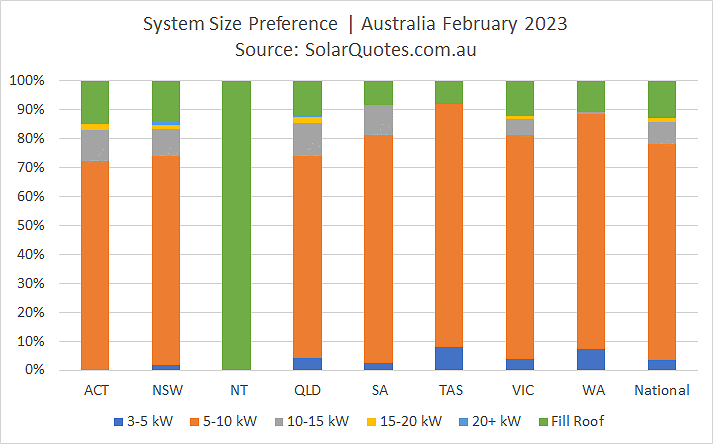
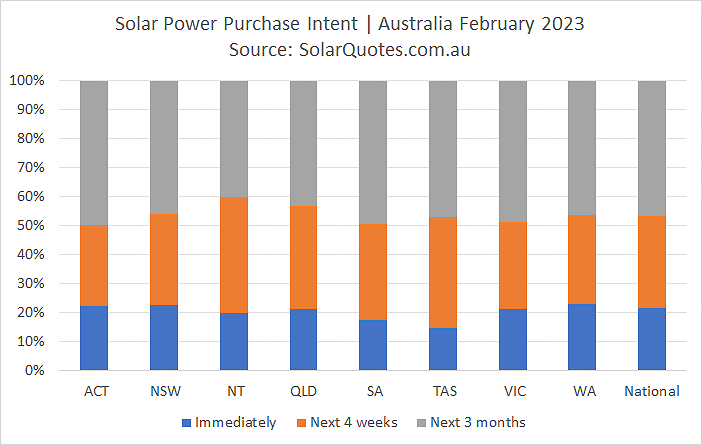
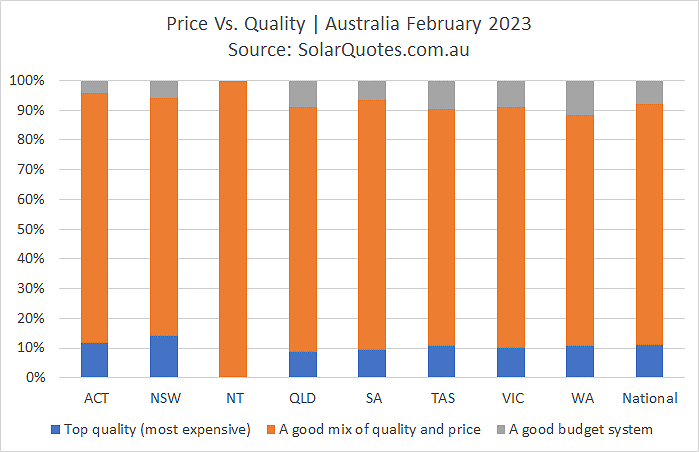
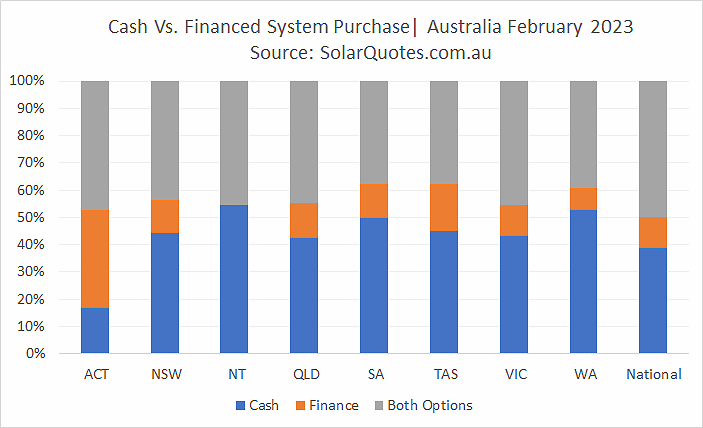
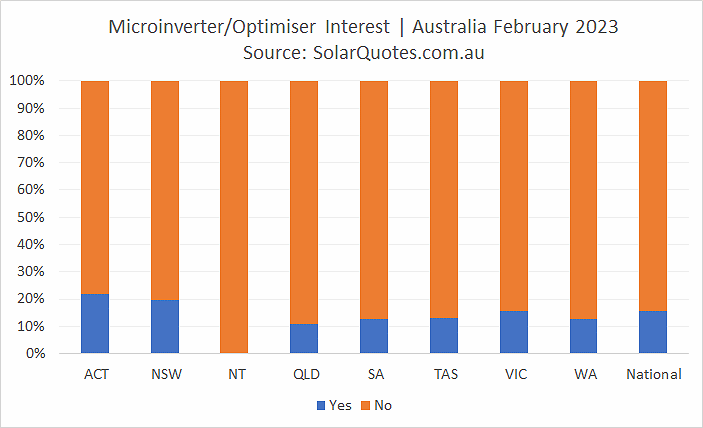
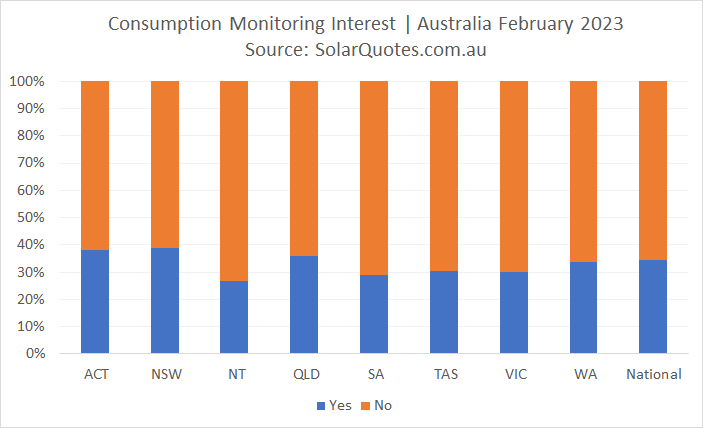
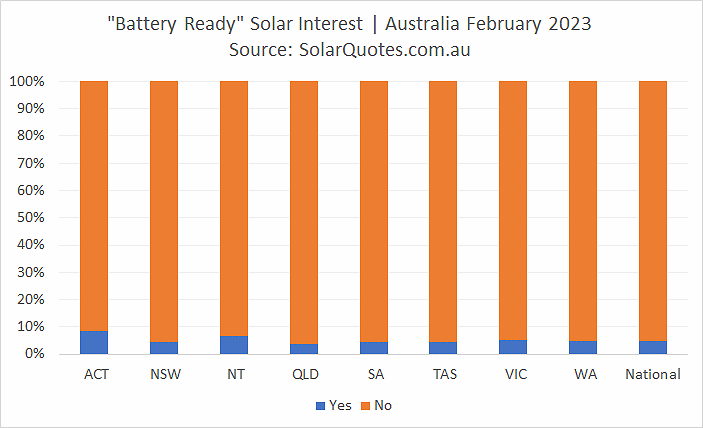
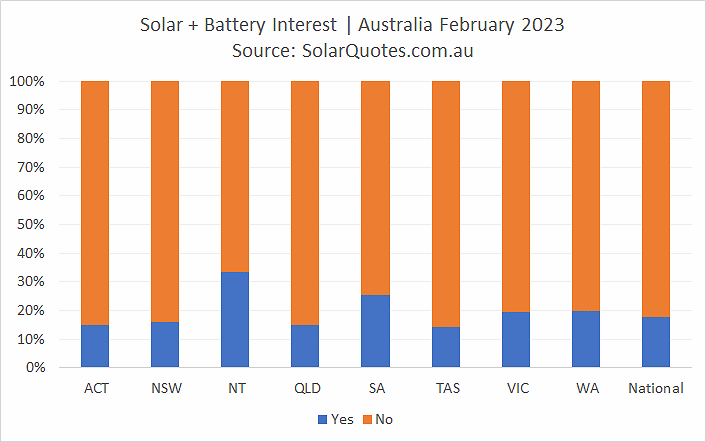
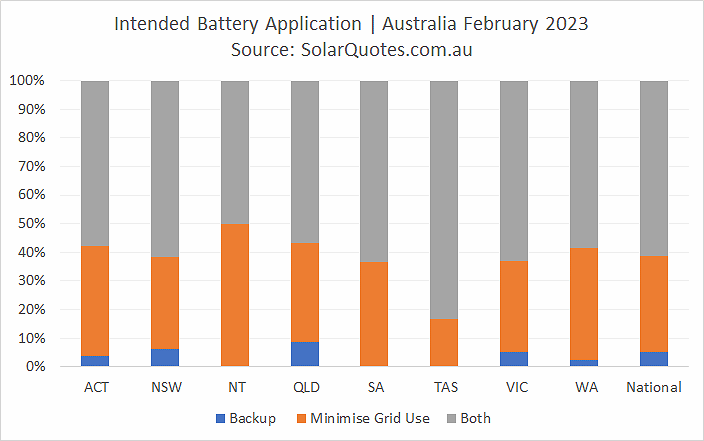
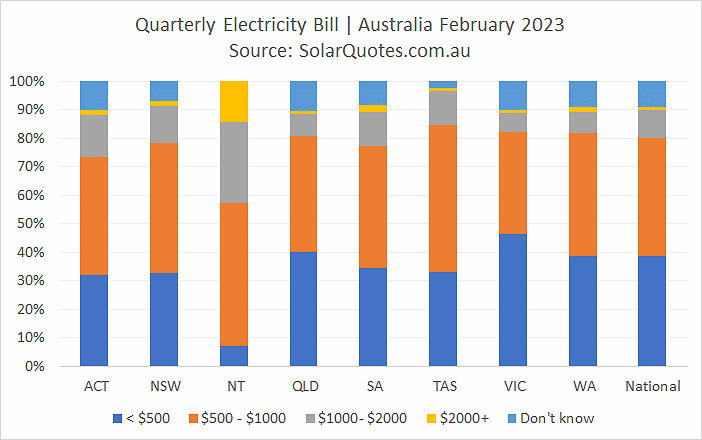
 RSS - Posts
RSS - Posts



Speak Your Mind